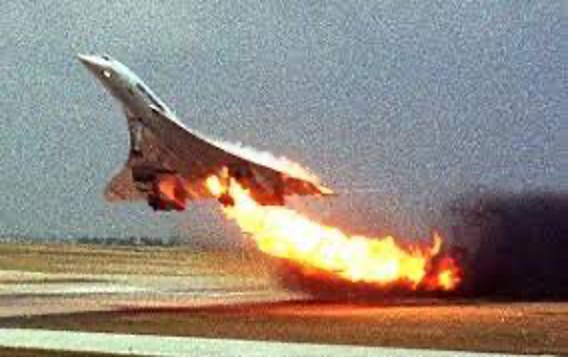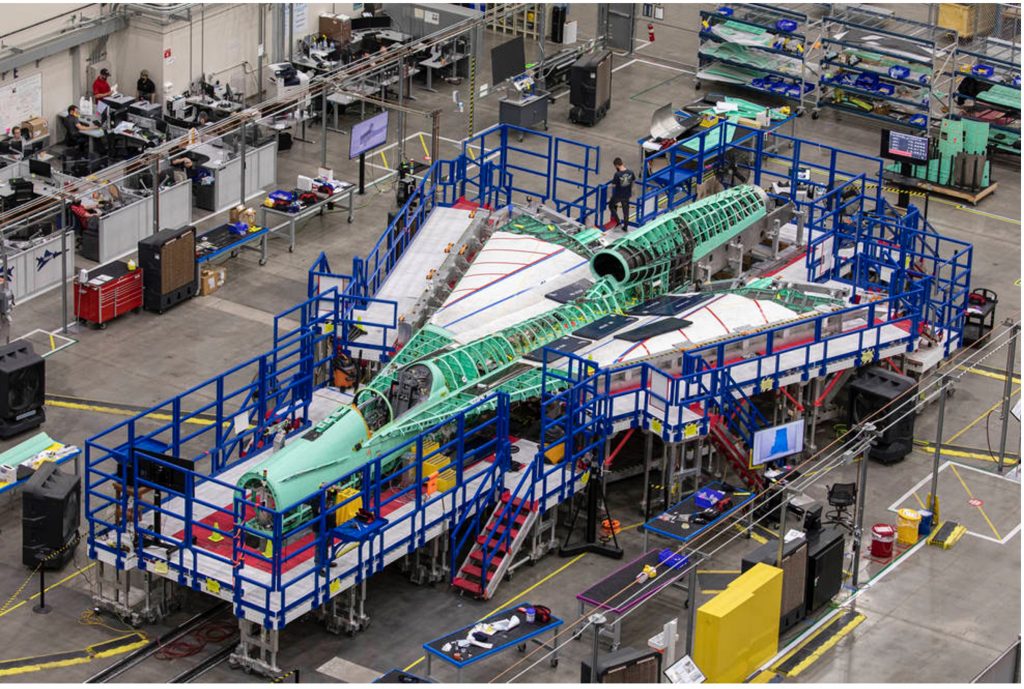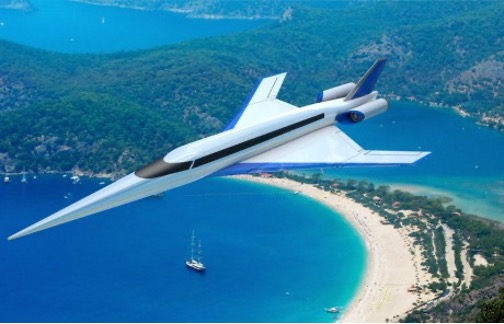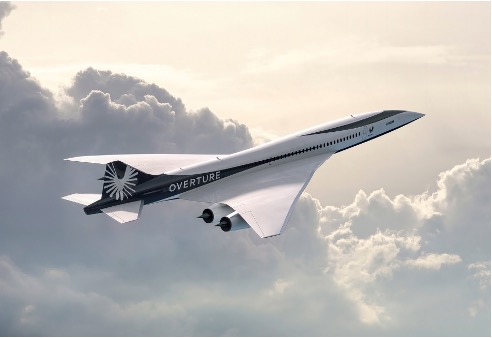When looking into the future of supersonic flight one must first look at its history. More specifically, Concorde was the first supersonic airliner (a passenger airplane travelling faster than the speed of sound), launched in 1976. It could fly from London to New York in just three and a half hours, which halves the modern-day flight time of commonly used Airbus A330s. That halves the time of being squished into an uncomfortable seat, whilst wishing that the person in front of you would stop putting their seat down! So, if Concorde could reduce travel time so much, why don’t we use it today?
One downside to Concorde was noise. The plane was supersonic, meaning it created a sonic boom. Ask your parents if they remember the sound of Concorde, chances are that they will tell you about a sound reminiscent of thunder travelling overhead or even the shaking of windows. This sonic boom was so disruptive that almost everycountry banned supersonic flights over land – this greatly decreased the number of routes supersonic planes could take. Concorde was also never really flown for economic sustainability, it was mainly used as a flagship for companies such as Air France and British Airways to bring in more customers across all flights. When the costs of running the plane became too much, the companies had already gained money and branding from its almost three decades of running – retiring Concorde thus mattered less.
The final tipping point was on the 25th of July in 2000. On a routine flight from Paris to New York, Air France Flight 4590 ran over a small piece of metal on the runway which burst a front left tyre. The debris from the highly pressurised tyre then smashed into the underside of the wing and made a hole in one of the plane’s fuel tanks. The fuel quickly rushed out of the plane and ignited. A plume of flame erupted from beneath the plane and its two engines failed.

With no useable engines and a highly damaged left wing, Concorde barely made it 200 feet above the ground before spiralling downwards then banking to the left. There was nothing the pilot could do. It crashed into a nearby hotel just outside of the airport. This high-profile incident caused huge reputational damage: the crash ended up killing everyone on board, as well as four on the ground – that’s 113 people.
Despite this tragedy of Concorde, there is still a large market for shorter flights and therefore, faster planes. Hundreds of companies and airlines are competing to fill this market demand by designing a new supersonic plane, able to fly like its predecessor (without crashing, we hope). These companies have what Concorde designers didn’t: experience. Engineers can look back and analyse what went wrong and what went right. They can use design inspiration such as the delta wings (more triangle-shaped than modern commercial planes) or droop noses (pointing downwards) used on the original design. They can also use this experience to avoid issues by using thicker tyres or more durable bodies. Also, technological and design improvements that have been made since 2000 can be implemented.
There are so many companies throwing their hats into the ring for the first commercial supersonic plane since Concorde that it is hard to identify the key players.
Here are my top three picks of those closest to supersonic flight:
3. NASA X-59 QueSST – Making sonic booms less… boomy

Now… I might be misleading you slightly with this choice, but it is vital to the future of supersonic flight. The NASA X-59 QueSST (Quiet SuperSonic Technology) is an experimental aircraft being used to test sonic boom dampening technology.
The important part of this program will take place in 2024 when the X-59 QueSST will be flown over select communities to test how the flight impacts real people. Then, after data has been collated, this plane will be presented to official aviation bodies to decide if they should change rules prohibiting supersonic flight over land.
This is really exciting for the future of supersonic flight.
Firstly, it would open up the possibility of popular flight routes over land, such as Los Angeles to New York or London to Hong Kong. This would make supersonic flight more economically viable due to a greater number of routes and appealing to business travellers. Secondly, companies aiming for supersonic flight would no longer have to fear sonic booms and design planes to quiet them. Some aircrafts have been designed to minimise the sound emitted and fly slower than they are able.
This project’s success is what many companies are placing their bets on as they design planes that, as of 2022, are not allowed to be flown over land. This brings me to my second pick…
2. Spike S-512 – Flying in high-speed style

Designed by Spike Aerospace and backed by large companies such as Siemens, the Spike S-512 is a supersonic business jet currently being marketed as a private jet for businesspeople or wealthy holiday-goers. On the Spike Aerospace website, it claims that the jet ‘cuts flight times by more than 50%’ and flies at ‘Mach 1.6… 450 mph faster than other civilian jets’. What makes Spike Aeronautics interesting are their claims of a windowless main body and their Quiet Supersonic Flight Technology.
The design is definitely something to behold- most notably the bold choice to forgo windows in the cabin and replace the sides with full-length digital displays. These displays would be used to show panoramic scenes of the outside world (such as the location the passengers are flying to) or presentations from a laptop. The lack of windows allows engineers to design the plane without worrying so much about the pressure from the high-speed endangering the passengers through broken windows.
The Quiet Supersonic Flight Technology is something they claim makes the plane able to fly at Mach 1.6 without producing a loud and disturbing supersonic boom, which should enable the plane to go over land. However, very little has been released about supposed flight tests, nor has any proof been given to back their bold claims. Despite this, the Spike S-512 is still one of the main contenders for supersonic flight and shows great potential through both its unique design and bold aspirations.
- Boom’s Overture – Supersonic flight for the masses

If you have seen any mention of supersonic flight, it was most likely to do with Boom Supersonic’s Overture.
In my opinion, they are the closest to success. This was shown in the 2022 Farnborough Airshow as the company revealed new designs for their 65-80 passenger airline. They are one of the few companies aiming to produce supersonic airliners, not just private jets, which is exciting as it may mean that supersonic flight will be available to more people. Main design features to note are their Rolls Royce engines, of which each plane will have four, which is unusual and used in very few planes today.
Another important thing to note is they have promised to run on 100% sustainable aviation fuel which is made of waste animal fats and have pledged carbon neutrality. Currently, the company has mostly planned on flying transoceanic so is not reliant on the removal of regulations on flying over land.
So, do you think supersonic flight is going to succeed? Or do you think the restrictions will be too much to let this dream fly?
